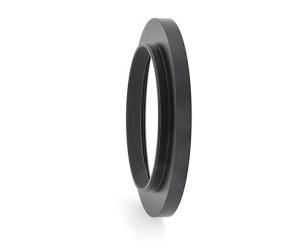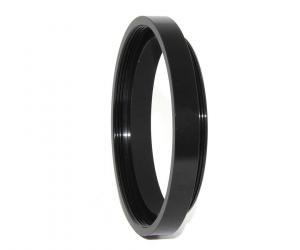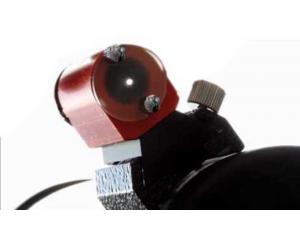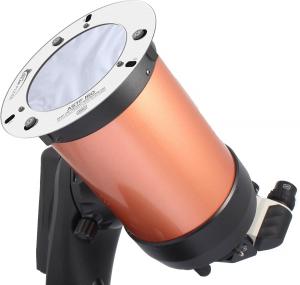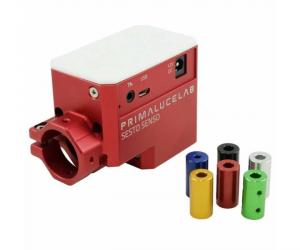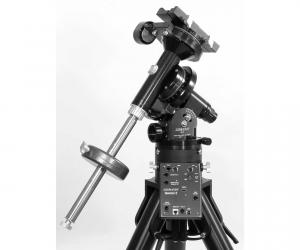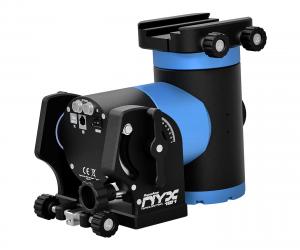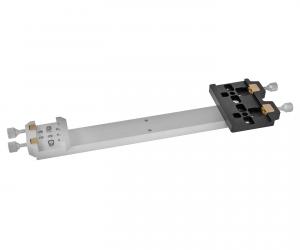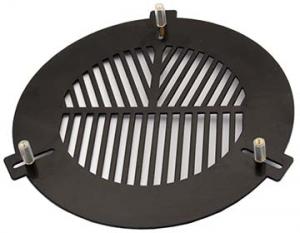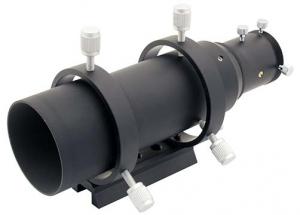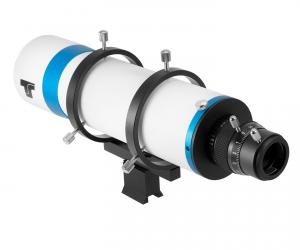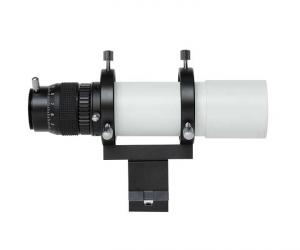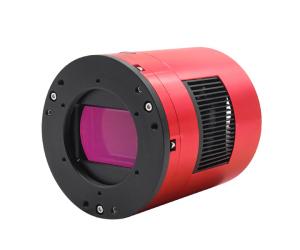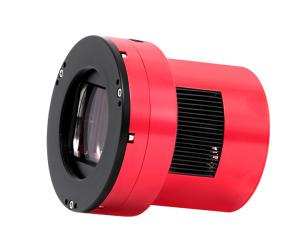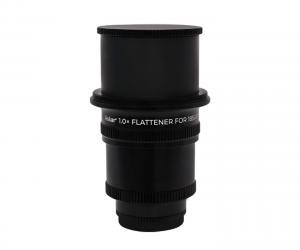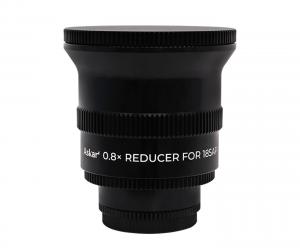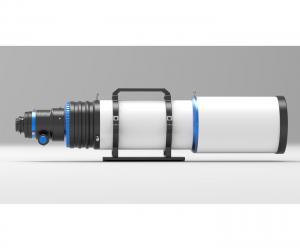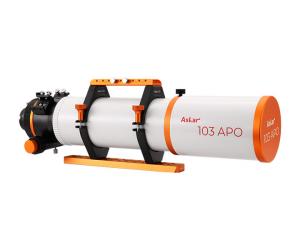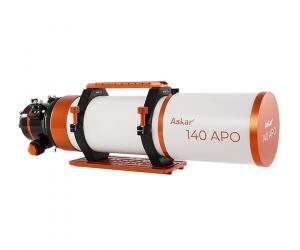- Telescopes
- Overview:
Telescopes - Achromatic Refractor
- Apochromatic Refractor
- Overview:
Apochromatic Refractor - ED Refractor - less color aberration than an achromatic
- SD APO - color free 2-element APO objective
- EDT APO - 3 element ED objective
- High End APO with 3-element APO objective - no color aberation
- Flatfield APO with flat field for Astrophotography
- All Apos and EDs from all manufacturers - large overview
- TS APO and ED from Japan with high quality optics
- Overview:
- Newtonian Telescopes
- Dobsonian Telescopes
- RC Ritchey Chretien Telescopes
- Casssegrain Telescopes
- Reflektor Telescopce with Lens Correcture
- Maksutov Cassegrain Telescopes
- GoTo Telescopes
- Solar Telescopes H-Alpha
- Overview:
- Mounts Tripods Rings Rails Power Supply ...
- Overview:
Mounts Tripods Rings Rails Power Supply ... - Mounts Equatorial with GoTo
- Mounts Equatorial without GoTo
- Mounts Azimutal with GoTo
- Mounts Azimutal without GoTo
- Mounts GoTo - Harmonic Drive
- Travel mounts for astro imaging
- Tripods Piers Polar Wedges
- Mount Control & Electronics
- Dovetail Clamps, Plates and Mount Adapters
- Tube Rings
- Power Supply
- Counterweights Balance Weights
- Mount Accessories - Other
- Overview:
- Telescope Accessories
- Overview:
Telescope Accessories - Eyepieces
- Barlows & Reducer Lenses
- Diagonal Mirrors and Prisms
- Binocular Viewers
- Finder Scopes
- Telescope Collimation and Test
- Cleaning Tools
- Transport and Storage
- Dust protection for Telescopes & Accessories
- Stray Light Protection
- Dewcaps and Heater
- Focusers, Adapters, Motorfocus
- Telescope DIY & Improvement
- Other telescope accessories
- Replacement Parts
- Overview:
- Filters
- Overview:
Filters - Color Filters and Color Filtersets
- Nebular Filters for Visual Observing
- Neutral-Density and Polfilter
- Photo Narrowband Nebular Filters
- Photo Broadband Filters
- Photo Planetary Filters
- Photo R-G-B and IR Cut Filters
- Photo - Filtersets
- Photometric Filters
- Clip Filter for DSLR Cameras
- Filter Wheels and Filterslider
- Solar Filters for white light
- Solarfilter for H-Alpha and Calcium
- Overview:
- Adaptors
- Overview:
Adaptors - Adapter 1,25" and 24,5mm
- Adapter 2"
- Adapter T2 - M42x0.75
- Adapter M48x0,75
- Adapter M54
- Adapter SC
- Adapter M63
- Adapter M68
- Adapter to other Threads
- Adapter Extensions
- Adapter camera bayonet
- Adapter Objective Filterthread
- Adapter Quick Changing , Rotation
- Adapter Eyepiece Projection
- Adapters Tilting
- Overview:
- Astrophotography and Photography
- Overview:
Astrophotography and Photography - Cooled Cameras
- Cameras without Cooling
- Deep-Sky Cameras uncooled
- Set-Offers Camera, Filter, Wheels
- Acessories for Cameras
- Travel mounts for astro imaging
- Imaging Correctors for Telescopes
- Autoguiding Cameras & Sets
- Everything for Guiding
- Focusing aids - Bahtinov mascs
- Flat Field foils and boxes
- Lenses for Cameras
- Piggyback Camera Holder
- Camera Bags, Photocases & more
- Digital Camera and Smartphone Adapter
- Other photo accessories
- Overview:
- Binoculars, Spotting Scopes, Microscopes, Range Finders
- Overview:
Binoculars, Spotting Scopes, Microscopes, Range Finders - Roof Prism Binoculars
- Binoculars with Porro prisms
- Binoculars from 100mm Aperture
- Binoculars with 1,25 inch eyepieces
- TSMX APO Binoculars
- Binoculars for Astronomy
- Binoculars Hiking Bird watching
- Monoculars - Opera Binoculars
- Accessories for Binoculars
- Spotting Scopes
- Range Finders
- Microscopy
- Bags for Phototripods & Binoculars
- Overview:
- Phototripods and Binomounts
- Books, Software
- Overview:
Books, Software - Books for Astronomy Beginners
- Star Charts and Planispheres
- Books about our Solar System
- Observing Tips for Amateurs
- Popular Astronomy Literature
- Teaching material
- Astrophotography books
- Telescopes, Observatories, Construction
- Calendars Yearbooks
- Software, Star Charts
- Books for Microscopers
- Books Nature and Animals
- Nature Photography TimeLapse
- Overview:
- Night Vision, Magnifiers, Weather, Domes & more
- Beginner Astronomy and Gift Ideas
- Second Hand & Special Offers
- New products
Manufacturer: Askar Sharpstar
Product number: AS185APO
EUR5999.00new
EUR 5.999,00RRP EUR 6.190,00you save 3.1% (EUR 191,00)
incl. 19 % VAT (DE)
The VAT indicated refers to that applicable in Germany. After logging in, the VAT amount is adjusted to the applicable VAT of the stored delivery country. Therefore, the final price may vary accordingly.
excl. 45.95 € shipping costs (DE)
more details to the shipping costs ...Please log in to calculate shipping costs to your country.
There are no reviews for this product
- Details..
- Technical data..
- In the box..
- Reviews..
- Manufacturer infos..
- Safety informations..
Askar 185 mm f/7 Triplet Apochromat - EDT Design - 3.5 inch RAP focuser
As a large aperture refractor, Askar 185APO fills the market vacancy, continues the high quality and cost-effectiveness of APO series telescopes, and provides a new choice for astronomical amateurs.Astrophotographic results obtained with this telescope on Astrobin
Here you can find some astrophotographs made with this telescope model: Link to AstrobinThe Askar 185APO is a telescope with 185 mm aperture, 1295 mm focal length, and f/7 native focal ratio
The large aperture of 185 mm gives it an inherent advantage in terms of light-gathering power, resolution, brightness, and contrast, allowing the photographer to gather more light and present more details and brighter objects in the image. Along with more light coming into the astrograph, the limiting magnitude can reach 13.1.The Askar 185APO adopts a triplet air-spaced APO lens design, including one piece of ED glass.
The Askar APO series employs special optical designs and multiple lens elements to correct chromatic aberration, naturally providing higher-quality object details and color accuracy.
In the refractor´s element structure, increasing the number of lens elements and designing lens combinations can effectively improve chromatic aberration correction. However, this also means increased production costs and design complexity.
ED glass, also known as low-dispersion glass, is a type of optical glass specifically designed to reduce chromatic aberration.
As a large aperture, long focal ratio telescope, the Askar 185APO was designed with portability in mind. The shortest overall length is only 1081 mm, the net weight is 14.9 kg, and the gross weight is 17.2 kg (including the handle, tube ring, and dovetail plate).
The retractable design of the dew shield, along with the enlarged locking screws, provides convenient usage. The dew shield serves the purpose of protecting the lens from the impact of external and internal light.
The Askar 185APO has an overall lightweight design for the tube ring, with an overall weight of 1.7 kg. The thumb screws enable easy opening and locking of the tube rings. Meanwhile, the base of the tube rings is heightened, providing more space.
The handle of the Askar 185APO has a special slot design, making it also a base for installing a finder scope. The handle itself is 400 mm long.
The dovetail plate of the Askar 185APO is the standard Losmandy dovetail plate, which is compatible with most equatorial mounts and bases on the market. We extended the length and added screw holes, making the length 400 mm, which is easier to balance on the mounts. With the slotted handle, the spacing between the tube rings can be adjusted as desired.

Integrated tube extension
It is worth mentioning that the rear lens tube of the Askar 185APO has an integrated retractable design. We strengthen the overall stability and ensure that the optical axis will not be affected when the lens tube is stretched, thus guaranteeing the quality of the image. The retractable part also features a rudder-type locking ring that makes it easy to loosen or tighten.When the lens tube is contracted, the Askar 185APO can be used with a binoviewer for visual observation. When the lens tube is stretched, the 185APO can be equipped with a specific reducer or flattener for imaging or a diagonal and eyepiece for observing.
In terms of visual observation, it can easily achieve focus when connected to 1.25" or 2" diagonals or various eyepieces. Because of the retractable lens tube design, it can also be attached to a binoviewer for visual observation.
The focuser of the 185APO
In terms of the focuser, the Askar 185APO is equipped with a large, rigid, 3.5-inch dual-speed rack and pinion focuser, which is compatible with most motorized focusers on the market. There is a high-precision scale on the drawtube with 10 cm travel. The entire focuser barrel is CNC machined with an anti-reflective internal design and matting paint, providing extra measures to eliminate stray light.There are two finder bases on both sides of the focuser, which not only eliminates the need for disassembling when changing the position of the finder scope but also provides additional mounting positions for other astronomical accessories.
The rear of the focuser features a big 360° high-precision rotator, along with precise scales for convenient adjustment and saving of rotation angles, enabling precise rotation. It is also equipped with an enlarged rotator locking screw that can be easily secured even under high loads. The telescope interface at the rear comes with a 1.25"/2" adapter.
The entire Askar 185APO tube is crafted using high-quality CNC machining with anodized and surface spray paint treatments. The orange accents on the ivory-white tube add a bright and eye-catching touch, presenting a stylish and elegant overall appearance.
Accessories: 0.8 reducer and 1.0 flattener
The Askar 185APO has two optional accessories: a 1x flattener and a 0.8x reducer. Both accessories come with a built-in 2" filter thread for direct filter mounting. The 0.8x reducer is equipped with M54/M48 adapters, and the 1x flattener is equipped with M68/M54/M48 adapters for easy connection.The 1x flattener does not change the telescope´s focal ratio itself. After connecting with the Askar 185APO, it still maintains a focal ratio of f/7. The flattener corrects field curvature and coma, resulting in flatter field edges and finer star points.
The 0.8x reducer can bring the Askar 185APO´s focal ratio from f/7 to f/5.6. This is a standard reducer with field flattening capabilities as well. A shorter focal ratio allows the OTA to have a wider field of view and faster exposure times, making it suitable for capturing large areas of nebulae, star clusters, and faint, fast-moving celestial objects.
This is how we hand over the apo to the amateur:
Every single 185APO is checked in our technical department before it is put into storage, in order to guarantee a consistently high product quality.Technical Information
Teleskop-Service has collected a lot of helpful information about refractors and provided it in English as a PDF file: refractors.pdf| Objective lens: | Air-spaced triplet apochromat (including one ED glass) |
| Aperture: | 185 mm |
| Focal length: | 1295 mm |
| Focal ratio: | f/7 |
| Total length: | 1081 mm (when the dew shield is retracted), 1222 mm (when the dew shield is extended) |
| The length of the rear retractable lens tube: | 95 mm |
| OTA weight: | 14.9 kg |
| Gross weight, including tube ring and dovetail plate: | 17.2 kg |
| Rear-end thread type: | M84 female thread |
| Adapters: | 2"/1.25" |
Image by a customer
Our customer Thomas Dahmen took a picture with this telescope and the 1x flattener, which we are happy to show here: Object: Leo Triplet (M 65, M 66, NGC 3628)
Object: Leo Triplet (M 65, M 66, NGC 3628)Photographer: Thomas Dahmen
Telescope: 185 mm f/7 Triplet Apo (AS185APO)
Flattener: Askar 1.0x corrector for the 185 mm f/7 triplet APO (ASFLAT-185)
We congratulate Thomas Dahmen on this impressive picture!
| Manufacturer / Importeur: | Teleskop-Service Ransburg GmbH |
| Street: | Von-Myra-Str. 8 |
| ZIP / City: | 85599 Parsdorf |
| Country: | Germany |
| Telefon number: | +49 89 99228750 |
| Email: | info@teleskop-service.de |
| Website: | www.teleskop-service.de |
Safety informations: PDF Download
Recommended accessories
Adaptors
Finder & Accessories
General Accessories
Mounts
Losmandy G11F GoTo Mount with Gemini 2 Electronics and Tripod FHD-Ma
EUR 5.754,00RRP EUR 7.290,00you save 21.1% (EUR 1.536,00)
Photo Acessories
TS-Optics Bahtinov Mask for Astrophotography - D= 195 - 240 mm
EUR 24,90RRP EUR 36,00you save 30.8% (EUR 11,10)
TS-Optics Deluxe 50 mm Guiding/Finder scope with micro focusing
EUR 119,00RRP EUR 139,00you save 14.4% (EUR 20,00)
ZWO Color Astro Camera ASI2400MC-PRO cooled, Sensor D=43.3 mm
EUR 3.690,00RRP EUR 5.290,00you save 30.2% (EUR 1.600,00)
Askar 1.0x Corector for the 185mm f7 Triplet APO
EUR 389,00RRP EUR 579,00you save 32.8% (EUR 190,00)
Askar 0,8x Reducer - Corrector for the 185mm f7 Triplet APO
EUR 399,00RRP EUR 489,00you save 18.4% (EUR 90,00)
Similar Products
Askar 103 mm f/6.8 Triplet Apo - EDT Design - 3.3 inch RAP focuser - with optical test
EUR 1.299,00RRP EUR 1.391,00you save 6.6% (EUR 92,00)
Askar 120 mm f7 Triplet APO - EDT Design - 3.5 inch RAP focuser - with optical test
EUR 1.890,00RRP EUR 1.990,00you save 5% (EUR 100,00)
Askar 140 mm f/7 Triplet APO - EDT Design - 3.5 inch RAP focuser with optical test
EUR 2.750,00RRP EUR 2.999,00you save 8.3% (EUR 249,00)
Transport & Covers
Reviews




















